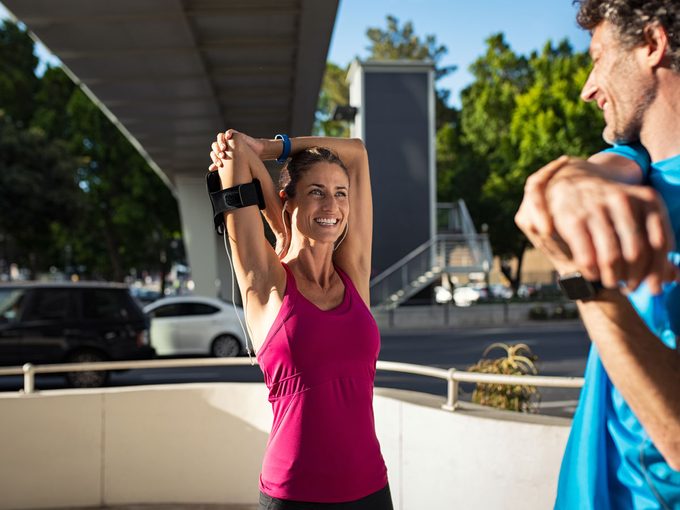In Your 40s? This Form of Training Will Keep Your Weight Under Control
The "middle-age spread" is not a myth.

Hormones, gravity and an even slower metabolism make this decade tough for women, especially given that we somehow start gaining more fat around our midsections, too. Affectionately called the “middle-age spread,” our body composition changes around this time, which means that gaining weight feels almost happenstance, even if our diets consist of a lot of steamed veggies and lean proteins. On top of this, reflexes and coordination can suffer from the biological changes associated with aging. You may have noticed that your body doesn’t respond the way it used to: You’re stiffer after a workout, and you don’t feel as flexible either. Happy days, right?
How you should exercise in your 40s
Here’s the good news: Cardio, resistance training and working on your mobility can help stem this tide. Vince Sant, co-founder and lead trainer of V Shred, an online training platform for individualized training, suggests that adding at least three days of cardiovascular work each week, whether that’s going for a run, taking a spin class or joining a boot camp, will help keep your weight under control. “The great thing about cardio is that you burn a lot of calories at the time of your workout.”
Additionally, Sant is quick to assert that resistance training — where movements are opposed against a weighted force provided by your body weight, gravity, bands, weight bars or dumbbells — will maintain weight loss and boost bone density and metabolism while reducing inflammation and staving off chronic disease.
Stretching and mobility exercises may not help with weight loss per se, but they will help with everyday living, from bending over to tie your shoes to regaining balance if you slip. Doing yoga, Pilates or tai chi or using foam rollers will improve your flexibility tenfold, and Sant strongly encourages that you take more time to focus on it. “It will give you better posture and improve the range of motion in your joints and muscles,” he says. Here’s more on why you should always make post-workout stretching a priority.
To make progress and stay healthy and injury-free, there are some other adjustments you can make outside of the gym that will help, too. “Remember that you aren’t as strong as you once were,” says Sant. “You won’t bounce back as quickly, and there are days where you just feel tired, no matter how much sleep you get. All of that is completely normal, so don’t beat yourself up over it. Focus more on hydration, rest and recovery and listening to your body. Next, learn the best way to exercise in your 50s.




